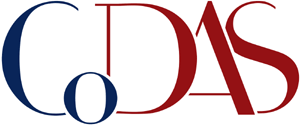ABSTRACT
Purpose
To compare the nasal cavity geometry of children and teenagers with cleft lip and palate and maxillary atresia by two methods: cone-beam computed tomography, considered the gold standard, and acoustic rhinometry.
Methods
Data on cone-beam computed tomography and acoustic rhinometry examinations of 17 children and teenagers with cleft lip and palate and maxillary atresia, previously obtained for orthodontic planning purposes, were evaluated prospectively. Using Dolphin Imaging 11.8 software, the nasal cavity was reconstructed by two evaluators, and the internal nasal volumes were obtained. Using rhinometry, the volumes of regions V1 and V2 were measured. The values of each examination were then compared at a significance level of 5%.
Results
Statistical analysis showed high intra- and inter-rater reproducibility in the cone-beam computed tomography analysis. The mean internal nasal volumes (± standard deviation) obtained using acoustic rhinometry and cone-beam computed tomography corresponded to 6.6 ± 1.9 cm3 and 8.1 ± 1.5 cm3, respectively. The difference between the examinations was 17.7%, which was considered statistically significant (p = 0.006).
Conclusion
The nasal volumes measured via the two methods were different; that is, they presented discrepancies in the measurements. The gold standard technique identified larger volumes than acoustic rhinometry in the nasal cavity. Therefore, determining which test reflects clinical reality is an essential future step.
Keywords:
Cleft Palate; Nasal Cavity; Acoustic Rhinometry; Cone-Beam Computed Tomography; Respiration

 Thumbnail
Thumbnail
 Thumbnail
Thumbnail
 Thumbnail
Thumbnail
 Legend: 1 = rhinometer 2 = computer monitor showing a rhinogram. View the patient in the position for data acquisition V1: nasal valve region, V2: turbinate region, and V3: nasopharyngeal volume
Legend: 1 = rhinometer 2 = computer monitor showing a rhinogram. View the patient in the position for data acquisition V1: nasal valve region, V2: turbinate region, and V3: nasopharyngeal volume
 Legend: Polygons delineating the nasal cavity in coronal (3A), axial (3B), and sagittal (3C) sections and three-dimensional image of the nasal cavity obtained from the three polygons (3D)
Legend: Polygons delineating the nasal cavity in coronal (3A), axial (3B), and sagittal (3C) sections and three-dimensional image of the nasal cavity obtained from the three polygons (3D)
 Legend: Acoustic rhinometry (RA), cone-beam computed tomography (TCFC), evaluator (A)
Legend: Acoustic rhinometry (RA), cone-beam computed tomography (TCFC), evaluator (A)